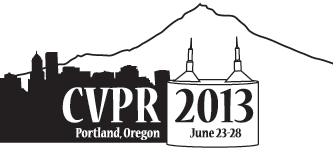-
Visible-Spectrum Gaze Tracking for Sports
AbstractIn sports, wearable gaze tracking devices can enrich the viewer experience and be a powerful training tool. Because devices can be used for long periods of time, often outside, it is desirable that they do not use active illumination (infra-red light sources) for safety reasons and to minimize the interference of the sun. Unlike traditional wearable devices, in sports, the gaze tracking method must be robust to (often dramatic) movements of the user in relation to the device (i.e. the common assumption that, because the device is wearable, the eye does not move with regards to the camera no longer holds.) This paper extends a visiblespectrum gaze tracker in the literature to handle the requirements of a motor-sports application. Specifically, the method presented removes the original assumption (in the original method) that the eye position is fixed, and proposes the use of template matching to allow for changes in the eye location from frame to frame. Experimental results demonstrate that the proposed method can handle severe changes in the eye location and is very fast to compute (up to 60 frames per second in modern hardware.)
Related Material
[pdf][bibtex]@InProceedings{Pires_2013_CVPR_Workshops,
author = {Pires, Bernardo R. and Hwangbo, Myung and Devyver, Michael and Kanade, Takeo},
title = {Visible-Spectrum Gaze Tracking for Sports},
booktitle = {Proceedings of the IEEE Conference on Computer Vision and Pattern Recognition (CVPR) Workshops},
month = {June},
year = {2013}
}
These CVPR 2013 workshop papers are the Open Access versions, provided by the Computer Vision Foundation.
Except for the watermark, they are identical to the accepted versions; the final published version of the proceedings is available on IEEE Xplore.
Except for the watermark, they are identical to the accepted versions; the final published version of the proceedings is available on IEEE Xplore.
This material is presented to ensure timely dissemination of scholarly and technical work.
Copyright and all rights therein are retained by authors or by other copyright holders.
All persons copying this information are expected to adhere to the terms and constraints invoked by each author's copyright.

